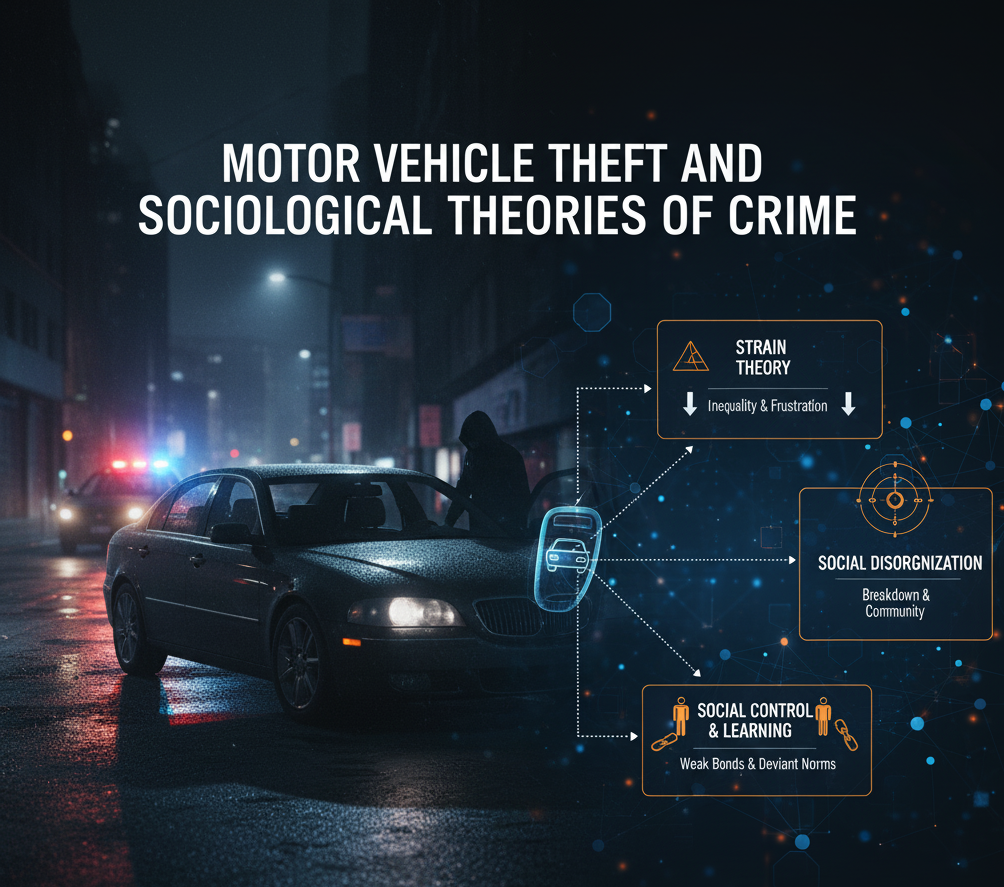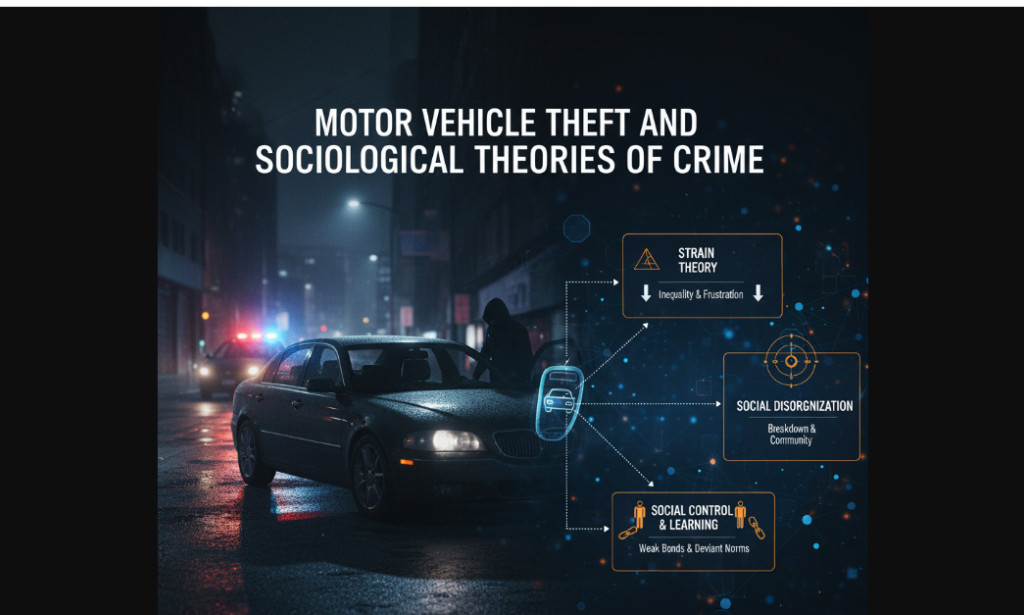
MOTOR VEHICLE THEFT AND SOCIOLOGICAL THEORIES
Lawrence Muramba
2025
Motor vehicle theft, often referred to as auto theft, is defined as the unlawful or unauthorized taking of a vehicle (Copes, 2015). This crime is a persistent issue worldwide and has significant social and economic consequences for victims, communities, and law enforcement agencies. Understanding the root causes of motor vehicle theft requires examining not only individual motives but also the broader social context in which these crimes occur.
Sociological theories including routine activity theory, social disorganization theory, and structural strain theory provide valuable frameworks for analyzing why motor vehicle theft happens and what societal factors contribute to its prevalence (Glaser, 1958). Routine activity theory argues that crime occurs when a motivated offender encounters a suitable target in the absence of a capable guardian (Cohen & Felson, 1979). In the context of motor vehicle theft, this means that vehicles left in poorly lit or unattended areas are more likely to be stolen, especially when offenders perceive that the risks are low and the opportunity is high.
Social disorganization theory emphasizes the link between crime rates and neighborhood characteristics, such as poverty, residential instability, and a lack of community cohesion. Shaw and McKay (1942) found that areas with high levels of social disorganization tend to have weaker informal social controls, making them more susceptible to crimes like motor vehicle theft. In these communities, local institutions such as schools, families, and neighborhood organizations may be less effective at deterring criminal behavior and fostering collective efficacy.
Structural strain theory, introduced by Merton (1957), suggests that crime arises when there is a disconnect between culturally approved goals (such as wealth or status) and the legitimate means available to achieve them. When individuals are unable to attain these goals through lawful means, they may resort to illegal activities, including auto theft, as an alternative pathway to success. This theory highlights how economic inequality and blocked opportunities can foster frustration and push individuals toward criminal conduct.
Recent research indicates that a significant proportion of motor vehicle thefts are committed by young offenders, who may act alone or as part of organized criminal groups. These offenders may be classified as professional criminals, who specialize in auto theft for profit, or opportunistic thieves who steal vehicles when the chance arises (Tittle, 1969). The increasing use of technology in both vehicles and theft techniques continues to evolve, presenting new challenges for prevention and law enforcement.
Moreover, the rise in motor vehicle theft can have ripple effects on communities, contributing to a sense of insecurity and mistrust among residents. High rates of auto theft may also strain police resources and increase insurance costs for vehicle owners. Addressing this problem requires a multifaceted approach, including community-based initiatives, improved urban design (such as better lighting and surveillance), and equitable access to social and economic opportunities. In summary, sociological theories help explain the interplay between individual choices and social environments in shaping motor vehicle theft. By understanding these underlying factors, policymakers and communities can develop more effective strategies to reduce auto theft and its negative consequences.
Works Cited
Cohen, L. E., & Felson, M. (1979). Social Change and Crime Rate Trends: A Routine Activity Approach. American 608. http://dx.doi.org/10.2307/2094589 Sociological Review,
Copes, Heith. (2015). Motor Vehicle Theft. Oxford Bibliographies. 44, 588
Glaser, Daniel. “The Sociological Approach to Crime and Correction.” Law and Contemporary Problems, vol. 23, no. 4, 1958, JSTOR, https://doi.org/10.2307/1190394. Accessed 26 Sept. 2025. pp. 683–702.
Merton, Robert K. Social Theory and Social Structure. Revised edition, Free Press, 1957.
Shaw, Clifford R., and Henry D. McKay. Juvenile Delinquency and Urban Areas. The University of Chicago Press, 1942.
Tittle, Charles R. “Crime Rates and Legal Sanctions.” Social Problems, vol. 16, no. 4, 1969, pp. 409–23. JSTOR, https://doi.org/10.2307/799950. Accessed 26 Sept. 2025.

You must be logged in to post a comment.